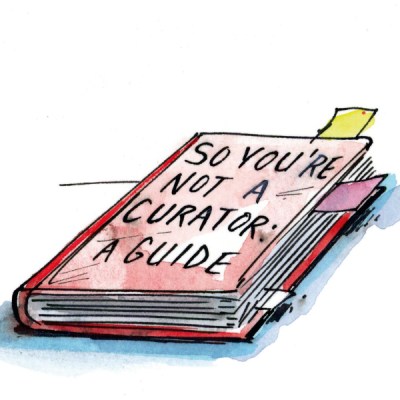In May, a painting by Basquiat sold at auction for a record $110.5m, making him the most expensive American artist of all time. Do such high prices obstruct scholarly objectivity or the judgement of artistic value?
Melanie Gerlis
Art and money have always been uncomfortable bedfellows. Many who love art like to believe it somehow transcends the filthy business of commerce. The reality is, of course, less romantic. Artists need money, and money, it seems, is rather fond of art. Works can’t get made in a vacuum and the machinations of the market help to keep them relevant. The trading records of works of art – who bought them, who sold them, for how much and why – arguably contribute to a more rounded art-historical picture.
Sometimes, however – such as when Basquiat’s Untitled (1982) sold to Yusaku Maezawa, a 41-year-old Japanese billionaire, for $110.5m at Sotheby’s on 18 May – money starts to overtake other judgements. On an auction price basis, Basquiat is now the best American artist of all time, unseating Andy Warhol. In the global rankings-by-numbers, Basquiat joins an exclusive nine-figure club that is topped by Pablo Picasso, whose Les femmes d’Alger (Version ‘O’) sold for $179.4m in 2015.
Art historically, this is a debatable position. This is true of much in a world that relies heavily on subjective opinion of economically useless objects, but big bucks leave less room for aesthetic assessment. In an increasingly international arena, money is proving the only universal language and is blurring the distinction between good and bad art. Not to say that the Basquiat is bad, but is it top-10 good? Either way, the record books will say it is.
A purist would argue that an item is worth whatever someone is willing to pay for it and that price and value are therefore aligned. Who’s to say that Untitled isn’t worth $110.5m (or $98m before the auction house’s fees were applied)? Sotheby’s, acting on behalf of the seller, didn’t think it was worth this much. Its experts valued the painting at $60m, a level believed by many in the market to be eye-wateringly high as it already represented a record for the American artist. And who set the previous record? The same buyer – Yusaku Maezawa – who bought another 1982 Basquiat from Christie’s just one year previously, for $57.3m. Prior to this, the top price paid for a work by the African-American artist was set in 2013 at $48.8m. Basquiat’s rise in value over four years demands a leap of faith, particularly when major works by other important American artists – think Robert Rauschenberg – can be had for a tenth of the price, according to the value-seeking art advisers Beaumont Nathan.
Financial gain is unlikely Maezawa’s primary motivation. His purchase has brought international column inches and social media likes that no public relations spend could match. But by buying another work for even more, he has successfully upped the value of his growing Basquiat collection, something that will benefit the artist’s other major collectors too, including the powerful Mugrabi family of dealers. While the adage is that it ‘only takes two’ to push auction prices to abstract levels, the vested interests of the underbidders at Sotheby’s are utterly unknown. Also officially unknown is who had already guaranteed to pay for the work – effectively buying it for around its $60m estimate prior to sale in exchange for a cut of the potential upside. This unknown guarantor had a right to bid on the work, adding to the appearance of demand. Did they? Market insiders say they did. Given the work’s eventual selling price, the guarantor likely made millions of dollars, so bidding it up seems a gamble worth taking.
This distorts Basquiat’s market and paints a deceptive picture of the health of the wider art market. Those who would separate art and money may not think this matters, but it does. It matters to the wider art world because museums, which carry a serious responsibility to validate art, are increasingly influenced – directly and indirectly – by its market. Basquiat’s upcoming solo show at London’s Barbican is hugely anticipated and welcome but its context (including part sponsorship by an auction house) is troubling. Blurred boundaries and conflicts of interest are part of the art market’s unregulated charm, but at what point does opacity turn into manipulation? I’d argue that feasibly falls somewhere between $60m and $110.5m.
Melanie Gerlis is the author of Art as an Investment? A Survey of Comparative Assets (Lund Humphries, 2014).
Chaédria LaBouvier
The recent Sotheby’s auction in which a Basquiat painting sold for $110.5m has undoubtedly made art history. How will this auction affect the scholarly reception of an artist for whom there is very little critical scholarship? The current interest in Basquiat’s work can be traced to recent exhibitions (such as the display of his rarely seen notebooks at the Brooklyn Museum in 2015), the rise of social media, the fact he is referenced by Jay-Z and Reebok, and the increased conversations surrounding black identity in America – made more urgent by the Black Lives Matter movement.
Given the popularity of Basquiat, especially among younger people, it remains a contradiction that research on him is so scant. There are, of course, exceptions: the work of Kellie Jones, Franklin Sirmans, Robert Farris Thompson, Jordana Moore Saggese, and Richard Marshall is invaluable and has made Basquiat’s work accessible, both to museumgoers and the general public. Their research has situated the artist in diasporic contexts, and in relation to jazz, hip-hop and methods of sampling. But there is still a long way to go before Basquiat is more firmly integrated into the art-historical canon; it’s a task that can’t be accomplished by one curator or researcher.
This became clear to me when I began Basquiat’s Defacement: The Project, which focuses on the 1983 painting Defacement (The Death of Michael Stewart). I believe that in the next 10 years it will be recognised as Basquiat’s most important work; a late 20th-century Guernica. In November 2016 I hosted a discussion about this painting with scholars at Williams College, where I also recently taught a class on Basquiat and the painting. As the Defacement project grows, the website will be a place of dialogue and research, as well as a collaboration with museums to bring this painting – and others – to the public. I have already sensed the effects of the May auction. More people have reached out on the website and on social media; more people are actively searching for Basquiat, at least on Google. I hope this online resource makes scholarship more accessible, but from my perspective, the impediments to critical Basquiat research have little to do with the market.
In launching the Defacement project I’ve experienced first-hand the possessiveness of the Basquiat industry, and the in-fighting among curators and researchers. In off-the-record conversations with senior museum curators and academics, a few have cited the politics and money around Basquiat as a reason for not seriously pursuing his work, or looking at it more critically. There is also a certain amount of academic (and press) territorialism around Basquiat that creates barriers where there should be collaboration. A Picasso scholar once told me about the impact one ‘gatekeeper’ had on the field, limiting scholars’ access to Picasso’s archives for years. It is a cautionary tale. This isn’t to ignore the role racism plays in the institutional neglect of Basquiat, but it’s worth acknowledging other forces that hinder the development of scholarship on the artist.
It’s also unclear what role the Basquiat estate will play in encouraging objective research and in opening up its vaults for study. The estates of Helen Frankenthaler, Robert Rauschenberg, and Joan Mitchell, for example, have made great efforts to tie the artists’ legacies to scholarship and have worked with researchers to do so – they understand that scholarship is an essential part of an artist’s historical survival. While exhibition catalogues are also important outlets for research, there need to be wider resources, particularly because the exhibition catalogue is often caught up in museum politics: favours are paid and made with the contributions, and works by influential collectors must be prominently displayed. Of course, art itself is political, as is any industry that has a commercial imperative. There is no artist in the 21st century that better represents the fragile nexus between art and money than Basquiat.
Aspects of the market have turned some museum directors and curators away from Basquiat. The best-case scenario is that the market and the scholarship will work symbiotically with one another. The auction merely confirmed Basquiat’s status as one of America’s greatest artists. It is time for the scholarship to catch up.
Chaédria LaBouvier founded Basquiat’s Defacement: The Project.
From the July/August 2017 issue of Apollo. Preview and subscribe here.



